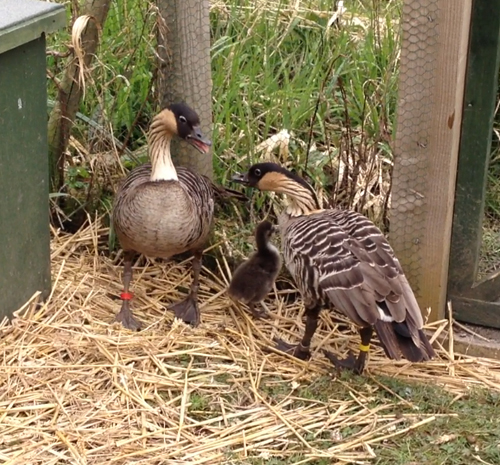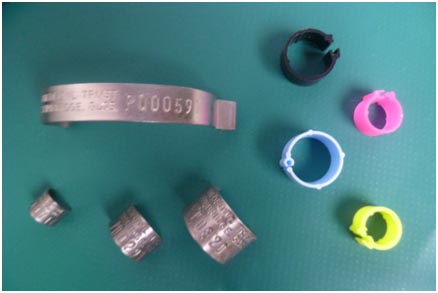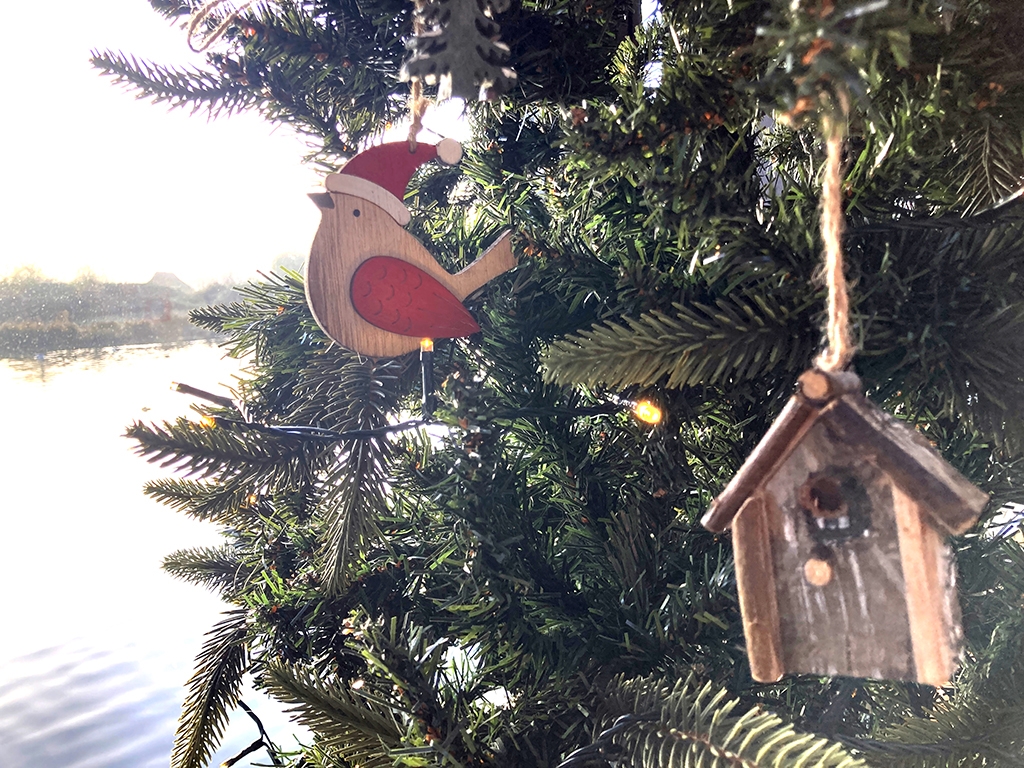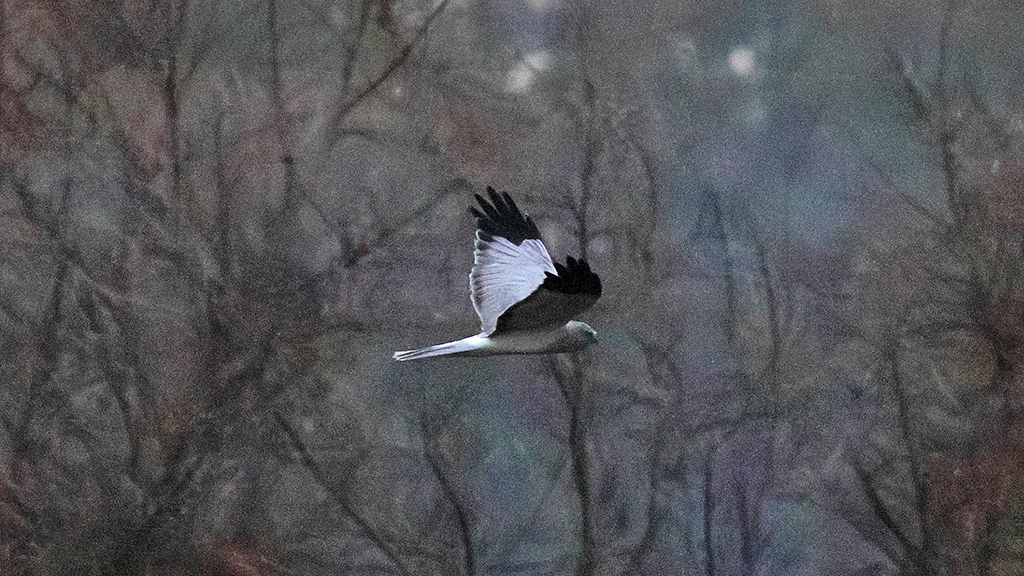Colourful leg ring proves nene gander is a love cheat!
New plastic rings help breeding program at WWT Arundel Wetland Centre
This spring rare wildfowl at WWT Arundel Wetland Centre are sporting colourful plastic leg rings that enable staff to identify them from a distance. The bright new leg bands alerted staff to the unusual fact that two female nene geese were laying eggs in the same nest and were paired with the same partner! WWT staff had nicknamed one pair of nene geese ‘Mr. and Mrs. Christmas’ - she had a red leg band and he had a green one. WWT staff noticed that a yellow banded female nene was also spending time with Mr. Christmas and using the same nest. All three geese are now raising the one gosling that hatched from this mixed nest. WWT staff have named the gosling Tiny Tim.
All birds in the Wildfowl and Wetland Trust collection wear a numbered metal leg – a ring on the right leg means the bird is male, on the left leg means that it is female. The second lightweight coloured plastic leg ring can be worn on their opposite leg and shows up well against the green of the nature reserve. The bright colours allow WWT staff to spot which birds are using nesting boxes without having to handle the birds to read their metal leg rings.
“We have 22 white faced whistling ducks.” said grounds supervisor Sam Halpin. “If a female with a red leg ring was seen leaving a nest box we could easily find who she is from our records without interfering with her egg laying.”
All information about each bird is recorded in a log under the number on the metal ring - pairings, eggs, hatching, health, annual vaccinations and behavioural changes are recorded. A record of colour bands is cross referenced with this log to identify any bird in the collection.





